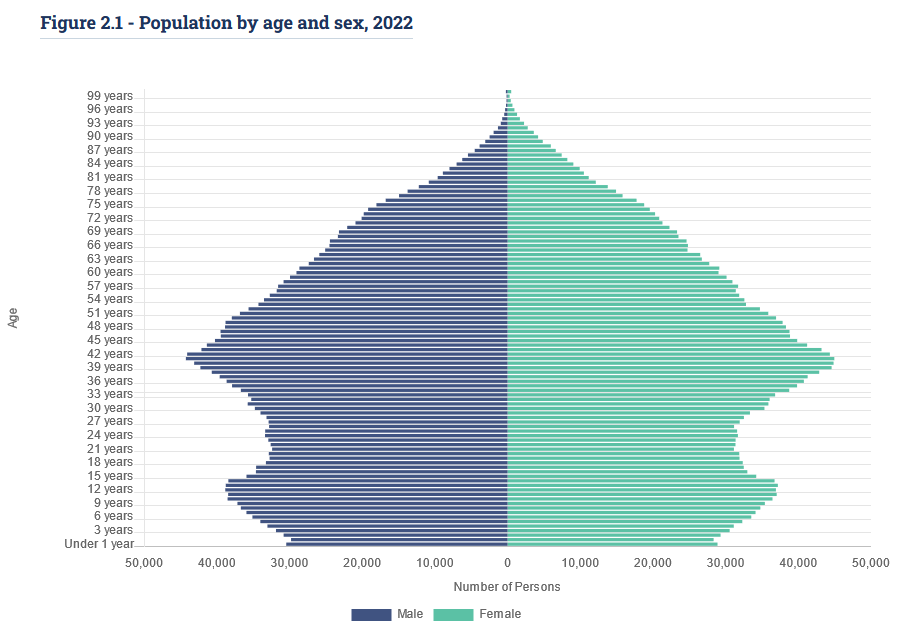The population of the Republic of Ireland is approaching 5.5 million, according to new experimental data from the CSO.
The Irish Population Estimates from Administrative Data Sources (IPEADS) found there were 5.33 million people in the Republic in April 2022.
That’s an increase of 50,000 since April 2021 and 130,000 since April 2020.
IPEADS said this increase “reflects the impact of changing birth rate and migration patterns over recent decades”.
There were 36,931 ‘newly active’ Ukrainians in Ireland, according to the data, along with 11,293 Indian people, 9,340 Romanian people and 6,966 people from the UK.
‘Newly active’ people are those who did not appear on any administrative systems the previous year, including newborns, new migrants and returning migrants.
 IPEADS data, April 2022. Image: CSO
IPEADS data, April 2022. Image: CSOThe IPEADS report also found there was a 50-50 split between the male and female population of the Republic of Ireland.
The median age of Irish men and women was 41 years.
The youngest populations were in Fingal at 35.9 years and Meath at 36.3 years.
The oldest average populations were in Dún Laoghaire-Rathdown, Kerry and Mayo at just over 40 years of age.e.
Some 14.7% of the administrative population were over the age of 65.
 IPEADS data, April 2022. Image: CSO
IPEADS data, April 2022. Image: CSOHigh birthrates in the late 1970s and early 1980s, along with high immigration of people in their 20s in the 1990s and early 2000s led to higher numbers of people in their 40s, according to IPEADS.
On the other hand, IPEADS said low birth rates in the late 1980s and 1990s combined with emigration has resulted in a smaller population of people in their teens and 20s.
The survey also measured age demographics among different nationalities in Ireland.
Some 42% (2,403) of Australians in Ireland were under the age of 15, while Brazilian nationals were concentrated in the 25 to 34 age group - 19,432 out of a total of 38,774.
Polish nationals are more likely to be aged between 35 and 44 (55,108 out of a total of 124,831) and UK nationals are mostly over 45 years of age (87,992 out of a total of 148,603).
The IPEADS report is experimental research from the CSO using administrative data from local authorities to estimate the population.
It notes the data is not comparable with official CSO population estimates such as Census data.









